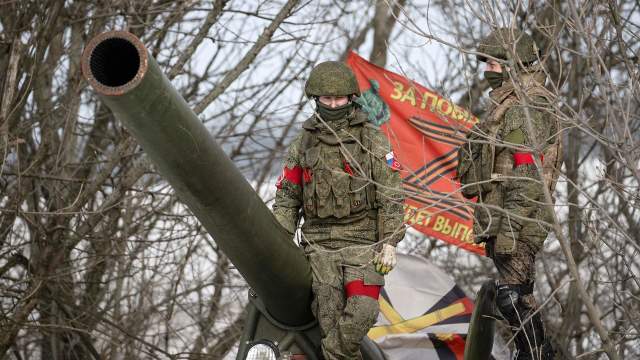Heavy guns and mortars will help to crack the enemy's defenses
The formation of new high-capacity artillery brigades has begun in the Russian army. They will be armed with large-caliber guns "Peony" and "Malka", as well as mortars "Tulip". The first such unit — the 17th Artillery brigade - has already been formed as part of the 3rd Zaporozhye Army Corps. Several new formations will appear in other army corps and armies in the SVO zone by the end of the year. Experts note that such artillery is necessary for hacking defense and attacks on the enemy's rear areas, and its strengthening may indicate the intensification of offensive actions.
Bouquet for a breakthrough
New high-capacity artillery units have begun to form as part of army corps operating in the SVO zone, sources in the Russian Defense Ministry told Izvestia. In particular, the creation of the 17th art brigade is being completed, the rest are in the process of formation.
According to the interlocutors of the publication, they will include divisions of heavy—duty guns 2S7 "Peony" and 2S7M "Malka", heavy mortars 2S4 "Tulip", as well as units of unmanned aviation - their functions will be confident guidance and correction of fire of high-power artillery systems.
The decision to form large-capacity artillery brigades was made based on the experience of a special military operation. They should radically strengthen the firepower of the Armed Forces of the Russian Federation, the interlocutors of Izvestia noted.
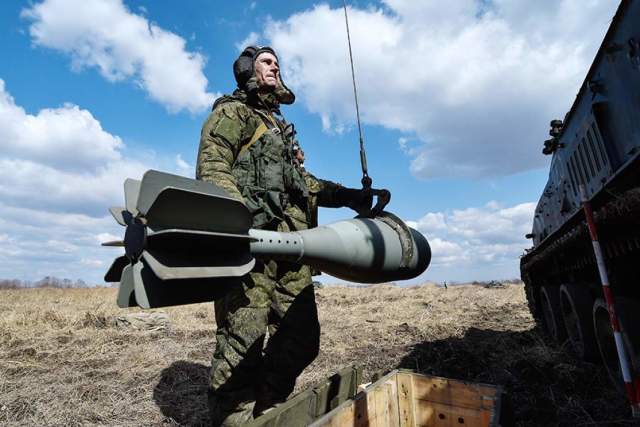
A serviceman of a battery of 240-millimeter self-propelled mortars 2C4 "Tulip" during tactical exercises of artillery units of the 5th Combined Arms Army at the Sergeyevsky training ground. 2017
Image source: Photo: TASS/Yuri Smityuk
Before the start of the SVO, the Russian army had only one military unit of high—power artillery - the 45th Brigade. It was part of the Western Military District.
The new formations will ensure the superiority of our artillery on the battlefield and will play one of the decisive roles during operations to break through enemy defenses, military expert Viktor Murakhovsky told Izvestia.
— Now it is important to wait for the moment when the soldiers and officers fully master the technique, — he explained. — We will soon see the full power of "Malok" and "Tulips". When using these systems, it is important to achieve competent and precise application of all means of artillery reconnaissance — radar, sound, passive, aerial, UAV and a number of others. Artillery of special power cannot be used without targeting, and it can be provided only by working closely with intelligence units. It takes time to work out the interaction in a single circuit.
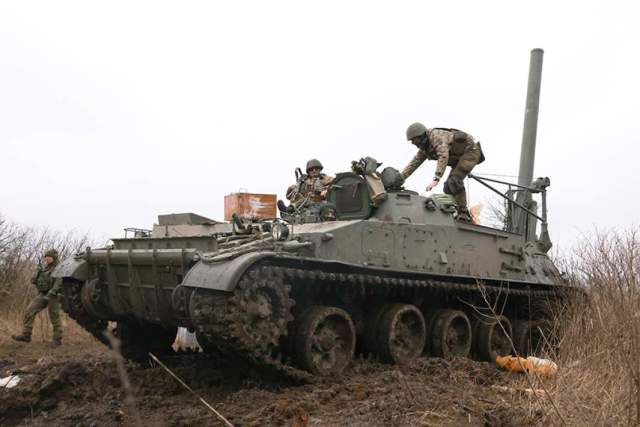
Military personnel during the combat operation of the 240 mm self-propelled mortar 2C4 "Tulip" during a special military operation
Image Source: Photo: TASS/Vladimir Gerdo
The expert noted that artillery plays a huge role in combat operations now. But it is the high-power artillery systems that should ensure a breakthrough in defense. According to Viktor Murakhovsky, "Malki" and "Tulips" complement each other. The self-propelled mortar "Tulip" works well against closed, concreted targets, tree-earth fortifications and in general against a well-equipped defense from an engineering point of view.
"Malka", according to him, should play an important role in the counter-battery struggle.
— The long firing range provides its good capabilities in the fight against enemy artillery, — he said. — It will also allow you to destroy important targets for the entire operational depth of the formation of Ukrainian troops. Only massive and concentrated blows can ensure this.
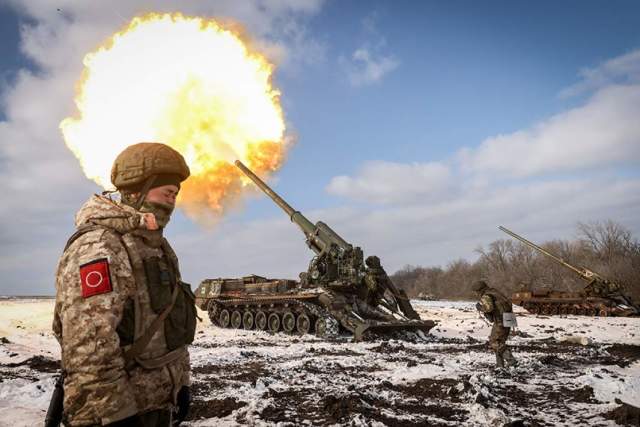
Calculations of 2S7M "Malka" guns are firing at the positions of the Armed Forces of Ukraine in the zone of a special military operation
Image Source: Photo: TASS/Stanislav Krasilnikov
Combining into brigades will help maneuver forces to deliver concentrated fire strikes at the right point of the line of contact, military expert Yuri Lyamin noted.
— The formations will have to make way for assault detachments, — he noted. — With the contact line stationary, the enemy managed to equip positions with equipped firing points. They must be destroyed before the infantry goes. The actions of individual guns or batteries will not help much in this case.
The expert also recalled that it will be easier to supply the brigades: it will simplify the delivery of ammunition and spare parts for guns and mortars.
From "Peony" to "Tulip"
In the zone of its high-power guns are used from the very beginning. They took part in the destruction of well-prepared fortified areas of Azovstal in Mariupol, as well as at the Zarya factories in Rubezhnoye and Azot in Severodonetsk. They helped to break into the enemy's defenses in the area of Popasnaya and Artemovsk.
Now they are used almost along the entire line of contact. The range of the guns allows you to destroy important objects on the left bank of the Dnieper.
The 203-millimeter 2C7 Malka is one of the most powerful field guns and the largest mass—produced armored vehicles in the world. The howitzer is mounted on the chassis of the T-80 tank. "Peony" is an earlier version of this system.
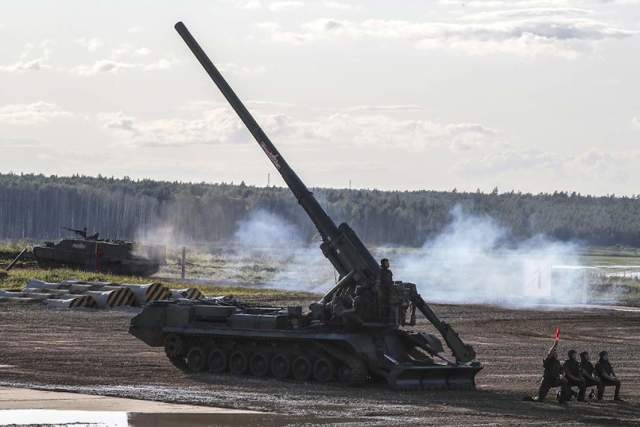
Self-propelled artillery installation 2S7 "Peony" during the dynamic exposition in the framework of the IV International Military-Technical Forum "Army-2018" in the Patriot Park
Image source: Photo: TASS/EPA/SERGEI ILNITSKY
In the process of firing, "Malka", like "Peony", can use concrete-piercing, cluster and high-explosive fragmentation ammunition. The mass of a conventional projectile is 110 kg. The firing range is up to 50 km, and the rate of fire is 2.5 rounds per minute.
"Malka", having entered the position, is able to fire in seven minutes, and "Peony" — in ten. The reverse process — the transfer of a self—propelled artillery installation (ACS) to a marching position - takes 5 minutes for the Malka.
In the SVO zone, this indicator has become especially important. A quick change of positions allows you to get away from the enemy's return fire.
Since the beginning of the special operation, the troops have been receiving modernized "Malki". However, details regarding the work on updating the systems are not disclosed.
The first batch of 240-millimeter 2C4 "Tulip" mortars was manufactured back in 1969, and two years later it was adopted by the army. It is mounted on a tank chassis, which provides the calculations with high mobility.
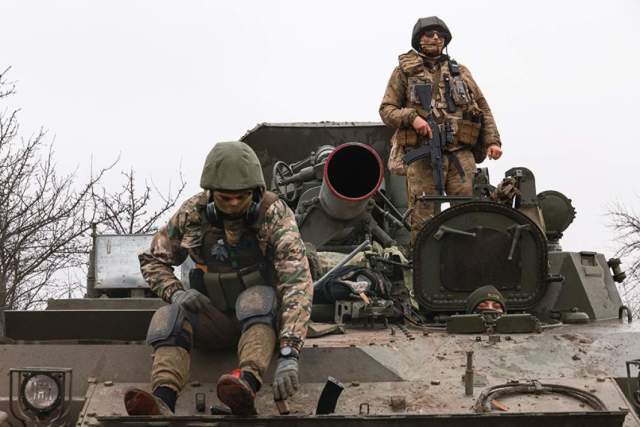
Calculation of 240-mm self-propelled mortar 2C4 "Tulip" in the zone of a special military operation
Image Source: Photo: TASS/Vladimir Gerdo
As part of the state defense order in the 2010s, modern controls and communications were installed on them, allowing the gun to work in a single tactical link system.
The ammunition of the "Tulip" is 20 high—explosive mines weighing 130 kg or 10 active-reactive 230-kilogram. The firing range is up to 9 km with conventional mines and up to 19 with active-reactive mines.
In the arsenal of the mortar there are cluster and high-explosive ammunition, as well as a guided projectile "Daredevil". To use it, it is necessary to highlight the target with a laser, which is done by scouts or drones.
Previously, large and special power units were part of the reserve of the Supreme High Command of the USSR and could use tactical nuclear munitions.
Alexey Ramm
Bogdan Stepovoy
